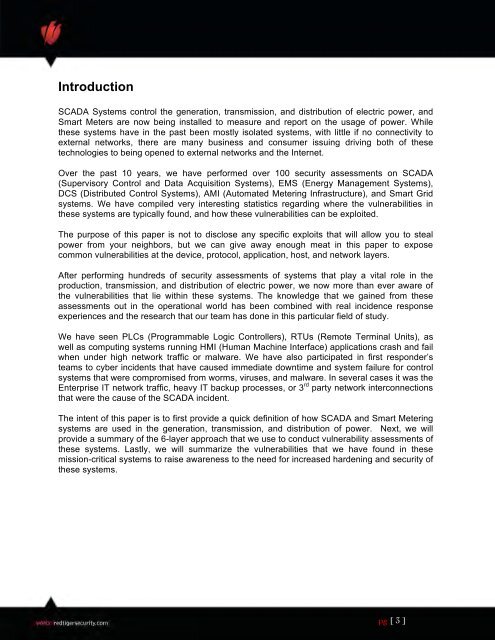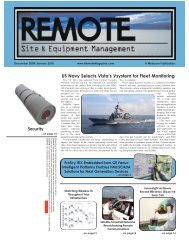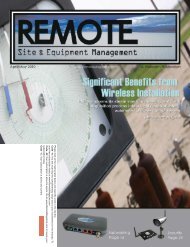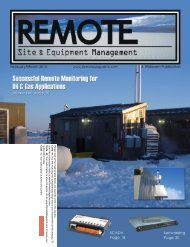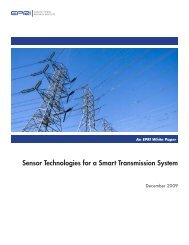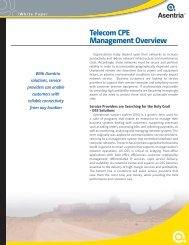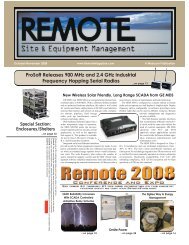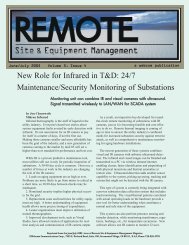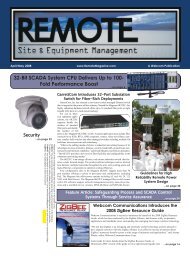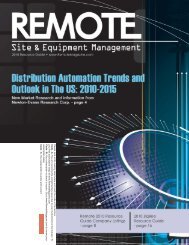Electricity for Free? The Dirty Underbelly of SCADA and Smart Meters
Electricity for Free? The Dirty Underbelly of SCADA and Smart Meters
Electricity for Free? The Dirty Underbelly of SCADA and Smart Meters
Create successful ePaper yourself
Turn your PDF publications into a flip-book with our unique Google optimized e-Paper software.
Introduction<strong>SCADA</strong> Systems control the generation, transmission, <strong>and</strong> distribution <strong>of</strong> electric power, <strong>and</strong><strong>Smart</strong> <strong>Meters</strong> are now being installed to measure <strong>and</strong> report on the usage <strong>of</strong> power. Whilethese systems have in the past been mostly isolated systems, with little if no connectivity toexternal networks, there are many business <strong>and</strong> consumer issuing driving both <strong>of</strong> thesetechnologies to being opened to external networks <strong>and</strong> the Internet.Over the past 10 years, we have per<strong>for</strong>med over 100 security assessments on <strong>SCADA</strong>(Supervisory Control <strong>and</strong> Data Acquisition Systems), EMS (Energy Management Systems),DCS (Distributed Control Systems), AMI (Automated Metering Infrastructure), <strong>and</strong> <strong>Smart</strong> Gridsystems. We have compiled very interesting statistics regarding where the vulnerabilities inthese systems are typically found, <strong>and</strong> how these vulnerabilities can be exploited.<strong>The</strong> purpose <strong>of</strong> this paper is not to disclose any specific exploits that will allow you to stealpower from your neighbors, but we can give away enough meat in this paper to exposecommon vulnerabilities at the device, protocol, application, host, <strong>and</strong> network layers.After per<strong>for</strong>ming hundreds <strong>of</strong> security assessments <strong>of</strong> systems that play a vital role in theproduction, transmission, <strong>and</strong> distribution <strong>of</strong> electric power, we now more than ever aware <strong>of</strong>the vulnerabilities that lie within these systems. <strong>The</strong> knowledge that we gained from theseassessments out in the operational world has been combined with real incidence responseexperiences <strong>and</strong> the research that our team has done in this particular field <strong>of</strong> study.We have seen PLCs (Programmable Logic Controllers), RTUs (Remote Terminal Units), aswell as computing systems running HMI (Human Machine Interface) applications crash <strong>and</strong> failwhen under high network traffic or malware. We have also participated in first responder’steams to cyber incidents that have caused immediate downtime <strong>and</strong> system failure <strong>for</strong> controlsystems that were compromised from worms, viruses, <strong>and</strong> malware. In several cases it was theEnterprise IT network traffic, heavy IT backup processes, or 3 rd party network interconnectionsthat were the cause <strong>of</strong> the <strong>SCADA</strong> incident.<strong>The</strong> intent <strong>of</strong> this paper is to first provide a quick definition <strong>of</strong> how <strong>SCADA</strong> <strong>and</strong> <strong>Smart</strong> Meteringsystems are used in the generation, transmission, <strong>and</strong> distribution <strong>of</strong> power. Next, we willprovide a summary <strong>of</strong> the 6-layer approach that we use to conduct vulnerability assessments <strong>of</strong>these systems. Lastly, we will summarize the vulnerabilities that we have found in thesemission-critical systems to raise awareness to the need <strong>for</strong> increased hardening <strong>and</strong> security <strong>of</strong>these systems.pg [ 3 ]


